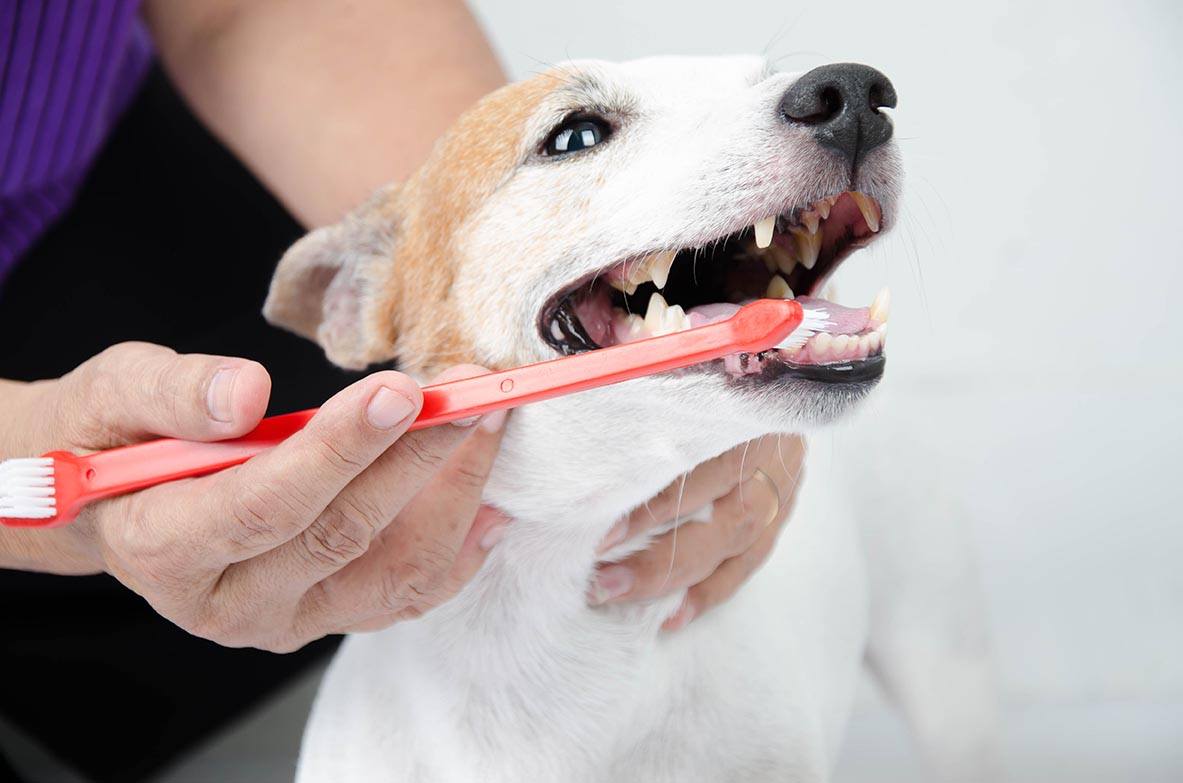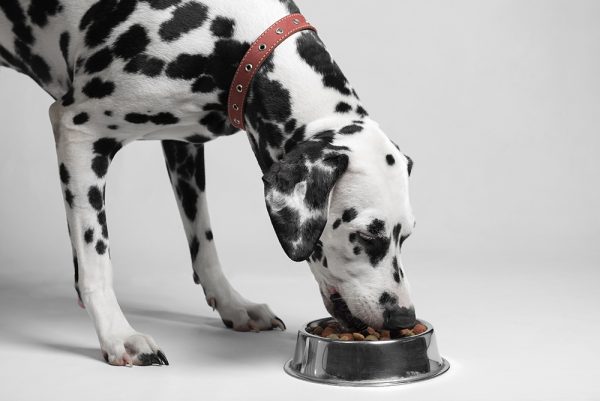What should you do if your dog has swallowed toothpaste? First and foremost, you have to prevent them from continuing to eat it, so remove the tube from their reach. Check the packaging to see how much they ate and if they have eaten the plastic too. The next step is to contact your veterinarian, emergency clinic, or the Animal Poison Control Center and ask for advice. Human toothpaste can be toxic to dogs.
Toothpaste can be very dangerous for dogs, which we will learn about shortly. When you see your canine eating it, try not to panic—get the help of professionals promptly. In this article, we’ll discuss why human toothpaste is not for dogs, how vets will treat them, and what you should do to speed up their recovery.

Why Exactly Is Human Toothpaste Harmful to Dogs?
Human toothpaste is not edible. That’s why we spit it out instead of swallowing it. In contrast, dogs typically cannot spit and will swallow toothpaste. Moreover, almost all toothpaste made for humans will include at least one, if not all, of the unsafe substances listed below.
Fluoride
Fluoride is a chemical compound found in almost all toothpaste brands since a lot of research has demonstrated its ability to decrease dental cavities and support oral health. At high enough doses, fluoride is very toxic to dogs1. If a dog has acute fluoride poisoning, the substance is absorbed quickly, and signs may appear 90 minutes after consumption.
- Nausea/vomiting
- Drooling
- Restlessness
- Weakness
- Rapid and irregular heart rate
- Seizures
- Stool and urinary incontinence
- Death might occur in severe cases

Xylitol
You may be familiar with xylitol, an artificial sweetener that is very popular in foods and personal care products for people. It is added to some kinds of toothpaste to make them sweeter and improve the experience of brushing our teeth.
Unfortunately, xylitol is particularly poisonous to our four-legged friends2. When dogs ingest xylitol, it is quickly absorbed into the bloodstream and causes the pancreas to release a significant amount of insulin. This rapid insulin release results in a severe drop in blood sugar (hypoglycemia)3, which can occur as soon as 10 to 60 minutes after eating. Hypoglycemia can be fatal if left untreated.
- Weakness
- Vomiting
- Staggering
- Decreased activity
- Incoordination
- Seizures
- Tremors
- Coma
Baking Soda
Baking soda is another ingredient that’s not found in all tubes of toothpaste but is often present on the labels of popular brands due to its teeth-cleaning effects. In small amounts, baking soda can be harmless for dogs, but larger doses can have harmful consequences, such as bloating, lethargy, vomiting, diarrhea, and electrolyte imbalance.
Plastic
You must be aware of the plastic part of the toothpaste tube and cap, which can be highly dangerous. In addition to being a choking risk, it can also lead to intestinal blockage or bowel obstruction, which can be fatal if untreated.
Sodium Lauryl Sulfate (SLS)
Let’s move on to another toothpaste component that’s harmful to dogs: sodium lauryl sulfate. Have you ever wondered why toothpaste can foam? It’s because manufacturers put a chemical called sodium lauryl sulfate in toothpaste products to provide foaming action. You can find it in most shampoos, soaps, toothpaste, and laundry detergents. If dogs swallow SLS in large enough doses, it may cause gastrointestinal upset. So, you now know the rest of the story behind pet toothpaste not foaming and one more reason why human toothpaste is not for dogs.

Can Dogs Eat Their Toothpaste?

Dog toothpaste comes in a wide range of flavors, from mint to liver and chicken. Although most of them are not fans of the mint flavor, food-motivated canines may find all those meaty products extremely appealing. It’s nearly impossible for dogs to spit out toothpaste, so they can safely swallow products specifically designed for them. However, if your pet ingests more than the recommended dose on the label, they might experience a minor stomach upset.
How Do You Handle a Dog That Eats Toothpaste?
If your dog swallowed toothpaste, you should contact a veterinarian, the Pet Poison Helpline, or the Animal Poison Control Center to ask for help. The detailed action plan should come from professionals with knowledge and experience in the canine field. It is not advisable to treat your dog yourself because doing so can exacerbate the issues and waste valuable time getting your dog treated.
Ensure you provide the exact brand and have the toothpaste tube on hand so the professional you’re speaking with can see or hear the ingredients. They will be able to inspect what and how much toothpaste the dog has swallowed.
If you need to speak with a vet but can't get to one, head over to PangoVet. It's an online service where you can talk to a vet online and get the personalized advice you need for your pet — all at an affordable price!
Treatment of Toothpaste Poisoning in Dogs

Treatment of Toxic Substances
In this case, the main goal of treatment is to remove the toxic substance safely and quickly. Your vet will likely induce vomiting if your dog has just swallowed toothpaste. The idea here is that the vet is trying to remove the toxic substance before your dog’s body absorbs it. They have to act quickly, and it’s not always possible to do that.
The vet may decide to hospitalize your beloved pet for 24 to 48 hours. Here, they might use intravenous fluids to make sure your dog is well-hydrated. This will help them get rid of the substance naturally. As part of treatment, close monitoring and other tests (blood and urine) are often needed to ensure that your pup’s organs have no damage. In the days or weeks that follow their release, it’s likely that you’ll have to come back for additional testing.
Treatment of Plastic Ingestion
Your vet will also consider the possibility of inducing vomiting if your dog swallows plastic instead of or along with toothpaste. Depending on when the canine ingests the plastic and where it most likely is in the body, they may or may not do this.
Again, this treatment needs the expertise of a professional, as well as testing and strict supervision. The vet can also require more in-depth investigations, such as X-rays or ultrasounds, to figure out the exact location of the plastic. Surgery could be necessary if the plastic is in a place where it might cause further complications.
Although you can induce vomiting at home, don’t do this. It’s too risky, especially if your pet has plastic lodged in their throat and you use the incorrect substances or fail to support them during and after.
So, What Should You Use to Brush Your Dog’s Teeth?

A popular option is using a dog-specific toothbrush to remove plaque and bacteria from your canine’s teeth. You can find it at most pet stores, online retailers, or veterinarian offices. In addition, only use dog toothpaste, but before purchase, you still have to check the label and watch for dangerous substances like xylitol or fluoride in the ingredient list.

Conclusion
There are increasing numbers of products that contain xylitol or other toxic substances for dogs in personal care items every day, so you have to check merchandise labels and store your oral care products carefully to prevent unwanted emergencies. You should never leave your toothpaste lying around and try to brush your dog’s teeth with that product. Make sure you only use one specifically designed for our canines.
If your pet swallowed toothpaste, call your vet, an emergency clinic, or the Animal Poison Control Center ASAP.
See Also:
- My Dog Ate an Ink Pen! Here’s What to Do (Vet Answer)
- My Dog Ate Charcoal, What Should I Do? What You Need to Know!
Featured Image Credit: Jumpstory


















